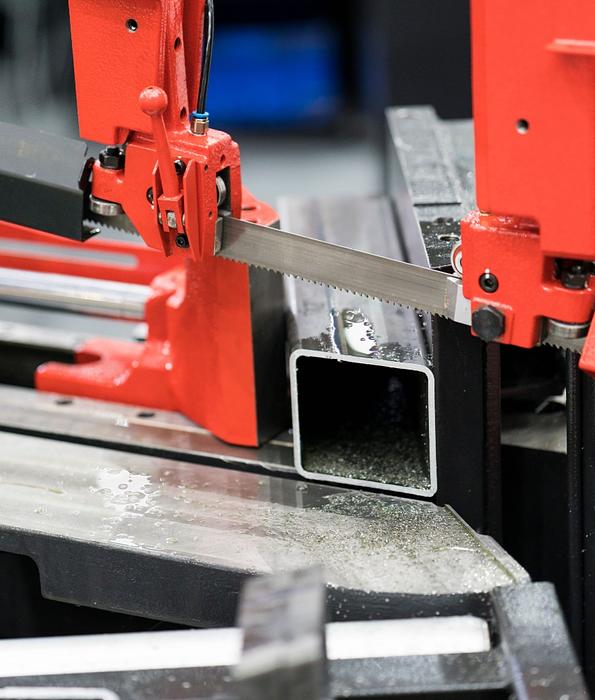Guillotine Metal Cutters Explained: Types, Uses and Buying Tips
If you’re cutting sheet metal regularly, a metal cutting guillotine can be a shop’s best friend. Also known as a guillotine shear, plate shear, squaring shear or guillotine cutter for metal, these machines slice through metal fast and clean. There’s less effort than you’d think too, as long as you pick the right one and know how to use it.
Article in brief
Guillotine metal cutters slice sheet metal using a fixed and moving blade. Ideal for aluminium, brass and mild steel.
Types include squaring shears (foot, hand or hydraulic), throatless shears for curves and bench shears for rough cuts.
CNC hydraulic guillotines offer speed and precision for industrial jobs, while manual models suit DIY setups.
Key settings to get right are the rake angle (controls cutting pressure) and shear angle (scissor vs chop motion).
PPE is essential. Think gloves, eye and ear protection, especially on powered machines.
After cutting, edges might need deburring with a file or sanding sheet.
Never reach into a jammed machine. Power down and call an engineer.
Throatless shears let you twist and turn the metal mid-cut for complex shapes.
Bench shears are best for straight cuts and heavy-duty repeat jobs.
What is a guillotine metal cutter?
- Guillotine shear/guillotine cutter for metal
- Plate shear/squaring shear
- Throatless guillotine/throatless shear
- Swing beam/variable rake guillotine
Types of guillotine cutters for metal
Hydraulic/swing beam – Best for heavy sheet and production runs.
Cons: Big, expensive and requires regular maintenance.
CNC/power guillotine – Ideal for high-volume, repeat cutting.
Cons: More complex and comes with greater cost.
Mechanical/foot-operated – Suited to thin sheet work and small workshops.
Cons: Limited thickness capacity and requires manual effort.
Throatless guillotine/shear – Great for curves, shapes and odd cuts.
Cons: Lower cutting force and may need multiple passes.
Bench shear – Best for small workshop jobs and simple cuts.
Cons: Not suited for curves or thick plate.
Each style is a metal guillotine cutter. The one you choose depends on what you're cutting and how much work you need it to do.
Uses of guillotine metal cutters
- Sheet metal fabrication – Cutting to length before folding, bending or welding
- Panel production – HVAC parts, signage, cladding
- Workshop prep – Turning large sheets into manageable pieces
- Architectural metalwork – Heavy trims, panels, facades
- Prototype & small-batch runs – Faster than plasma or laser for straight cuts
Safety & best practice
- Always use PPE. Safety glasses, gloves and ear protection.
- Check guards, clamps and all safety devices. Never work around an unguarded blade.
- Set the rake or shear angle (if adjustable) to reduce cutting force and improve finish.
- Don’t overfeed. Let the machine do the work.
- If the cut metal doesn’t drop free, don't try to pull it out mid-cycle. Shut the machine and clear it safely.
- Keep blades sharp and aligned. A dull blade stresses the drive system and gives bad cuts.
- Always confirm the hold-down clamps are secure before cutting — loose sheet can spring up or jam. Never stand directly behind the sheet exit, as longer plates can kick back when the cut completes. If your guillotine has an adjustable rake, always reset it for thin stock to avoid bending the trailing edge.
- Schedule regular maintenance: check oil levels (for hydraulic units), inspect hoses and seals monthly, and verify blade alignment quarterly. Preventive servicing avoids costly downtime.
How to choose a guillotine metal cutter: 7 buying tips
1. Cutting capacity & length
2. Power & drive type
3. Rake & shear angle adjustability
4. Back gauge & material support
5. Blade quality & maintenance
6. Safety features & compliance
7. Service, parts and support
What to do after cutting: deburring and finishing
Even with a straight cut, it’s not always ready to go. Depending on your metal and blade sharpness, the cut edge might be a bit rough or leave burrs.
- Deburring – Use a mill file, deburring tool or flap disc to take off sharp edges. Find out more in our guide to cutting sheet metal.
- Finishing – If surface finish matters, hit the cut with aluminium oxide paper, Scotch-Brite or even a linisher for a smoother look.
- Protecting the cut edge – On mild steel, a quick coat of red oxide primer or zinc spray helps prevent rust.
Guillotine cutters vs other cutting methods
Guillotine – Best for straight, clean cuts on sheet metal.
Cons: Can’t cut curves and takes up space.
Plasma cutter – Ideal for complex shapes and thick plate.
Cons: Can cause heat distortion and leaves rougher edges.
Angle grinder – Great for quick, rough cuts.
Cons: Messy, noisy and produces sparks.
Bandsaw – Perfect for tubes, sections and precise cuts.
Cons: Slower than a guillotine.
Laser cutter – Best for precision cutting and intricate parts.
Cons: Expensive and slower on thick plate.
So, where does a metal cutting guillotine shine? When you need fast, straight, repeatable cuts in sheet metal. And you need them now.
Guillotine cutters for metal: Summing things up
Get your metal cut to size. No guillotine needed
Not got space for a guillotine in your workshop? No problem. At The Metal Store, we’ll cut your metal to the exact size you need. And it’s free.
Order your mild steel, aluminium, brass or stainless steel, pick your dimensions then let us do the slicing. You get a clean edge, no faff and fast delivery across the UK.
.jpg)

